This newsletter has been around for nearly two years, and in all that time I think I’ve only shared Bleeding Heartland’s wildflower content once. But with poison hemlock in the news this week, I thought you might appreciate the latest installment.
I launched the “Iowa wildflower Wednesday” series in March 2012, without putting much thought into the plan. Now I often hear from readers that the wildflower posts are their favorites, as a break from relentless negativity they encounter online.
Guest authors and photographers contribute much of the wildflower material, and I learn so much every time I edit one of their essays. All wildflower posts (featuring more than 250 mostly native species) are linked here, alphabetized by the plant’s common name. This page features the most recent posts. The recap of wildflower pieces from 2023 will give you a sense of the variety of plants featured—some are widely dispersed, others extremely rare.
For those looking for wildflower pictures year round, or seeking help with plant ID, check out the Facebook groups Flora of Iowa or Iowa wildflower enthusiasts. If you’d like a book to take with you on nature outings, guest author Lora Conrad reviewed some of the best wildflower guides a few years ago. A book featuring plants native to our part of the country is probably more reliable than the plant ID app on your phone.
This post first appeared at Bleeding Heartland and is shared here as part of the Iowa Writers Collaborative. For regular emails linking to all recent Bleeding Heartland articles and commentary, subscribe to the free Evening Heartland newsletter. If your email provider truncates this post, you can read the whole article without interruption at this link.
Radio Iowa reported on June 14 that Hancock County Weed Commissioner Jason Lackore “is sounding the alarm” after finding poison hemlock in two public areas upstream from sites where cattle producers let their animals graze.
“If it was any other plant, I wouldn’t be making such a fuss, but this plant — all parts are extremely poisonous to humans, domestic animals,” Lackore said. “And you hear a lot about livestock, cattle, ingesting small amounts. It’s fatal.”
Poison hemlock (Conium maculatum) is best known as an ancient method of execution, used to kill the Greek philosopher Socrates. This European native has unfortunately spread across the U.S. and is prevalent in Iowa. I see it almost every day while walking my dog. I took all of the photos enclosed below less than a mile from my home in Windsor Heights.
Habitats where poison hemlock thrives “include edges of degraded wetlands and prairies, low-lying areas along small rivers, banks of drainage ditches, thickets, woodland borders, fence rows, low-lying areas along railroads and roads, pastures, and abandoned fields.” You will most likely find it on disturbed ground, such as near railroad tracks or pavement. This patch is growing next to the parking lot behind the “Sherwood Forest” strip mall on Hickman Road.
That purple sign reads “prairie restoration.” It went up around twelve years ago, when a local student seeded a prairie patch in this area for his Eagle Scout project. Unfortunately, with no one maintaining the plantings, the field became overrun with invasive plants within a few years. I rarely see prairie species there anymore.
There’s no natural check on poison hemlock; according to Illinois Wildflowers, “Mammalian herbivores won’t touch the foliage because of its bitter rank odor and extreme toxicity.”
Like wild carrot (also known as Queen Anne’s lace), which it resembles, and other members of the parsley family, these plants are on a two-year cycle. Basal leaves grow during the first year, and the flowering stalk appears the following year.
The next image shows the plant in its first year.
In the second year, poison hemlock plants typically reach heights of three to eight feet. I’ve seen them much smaller, though; this one was barely one foot tall.
Some native plants—such as common elderberry and cow parsnip—also have clusters (umbels) of small white flowers blooming in May or June across Iowa. But the leaves and flower clusters on those plants look quite different.
Minnesota Wildflowers notes another distinguishing feature of poison hemlock: “The main stem is light green and covered in purple spots.” You can see a splotchy stem on the right side of this image.
After the blooming period, the foliage turns yellow, and the stems may look mostly red, rather than splotchy.
I struggle to photograph poison hemlock flowers, which “span only 1/8″ (3 mm.) across when they are fully open.” This plant has buds on the verge of opening as well as clusters of flowers in full bloom.
More flowers open:
Getting a clear view of the green fruit as it develops is also challenging. These plants have some clusters of flowers open and other clusters of green seed pods.
Eradicating poison hemlock is not easy. Illinois Wildflowers advises, “In removing this plant from a given area, don’t pull it out using your bare hands. It is better to wear washable gloves while hand-pulling a limited number of plants. For large areas of infestation, it is best to apply broadleaf herbicides or mow down the plants during the spring shortly before they develop flowers.”
Nadia Hassani wrote on The Spruce website,
Small first-year seedlings can be removed by hand. After a rain when the soil is moist is best to remove the entire tap root. You might have to use a trowel or a shovel if the rosette is already big.
If you are dealing with a heavy infestation and a large area, mowing the infestation repeatedly helps to weaken the plants. Mowing must be done in the early summer before the plant has set seeds, otherwise you are dispersing the seeds even more. Mowing in the late summer after poison hemlock has gone into see[d] also poses a greater health hazard.
If you cannot get the infestation under control manually, it is best to use a broad-spectrum herbicide in the first year of the plant’s life cycle.7 Keep in mind that it will also kill all the other plants so apply it in a highly targeted way and when there is no wind to avoid herbicide drift. Applying an herbicide does not prevent seeds that are already in the soil from germinating (poison hemlock seeds remain viable for up to six years)8 so you will likely have to repeat the herbicide application when new seedlings emerge.
I hate to advocate for herbicide in any context. But look what can happen if you don’t get poison hemlock under control. This colony is growing in a retention basin just steps away from the parking lot of Clive elementary school, my alma mater (which is now called Clive Learning Academy). I’m talking about the taller plants that are turning yellow.
Here’s the view from the other direction. I believe the poison hemlock surrounding that cluster of eastern cottonwood trees in the background likely provided the seed base for the plants now growing in the retention basin. I’ve seen poison hemlock around those trees since I learned to identify the plant a decade or so ago.
As I mentioned above, poison hemlock does well on disturbed ground, so this European invader would have easily found a foothold after the West Des Moines school district built a circle drive behind Clive school.
Moving closer to those trees, which are growing next to the bike trail that runs through Windsor Heights along North Walnut Creek, you can see the poison hemlock more clearly.
The Iowa Writers Collaborative has three new members: Taylor Deckert, who writes Taylor’s Millennial Mindset, Bill Tubbs (Impressions), and Dennis Goldford (Let’s Talk Politics).
If you aren’t already receiving the Sunday morning roundup, which links to recent posts by all of our columnists, sign up here. It’s free!
We are proud to have an alliance with Iowa Capital Dispatch.




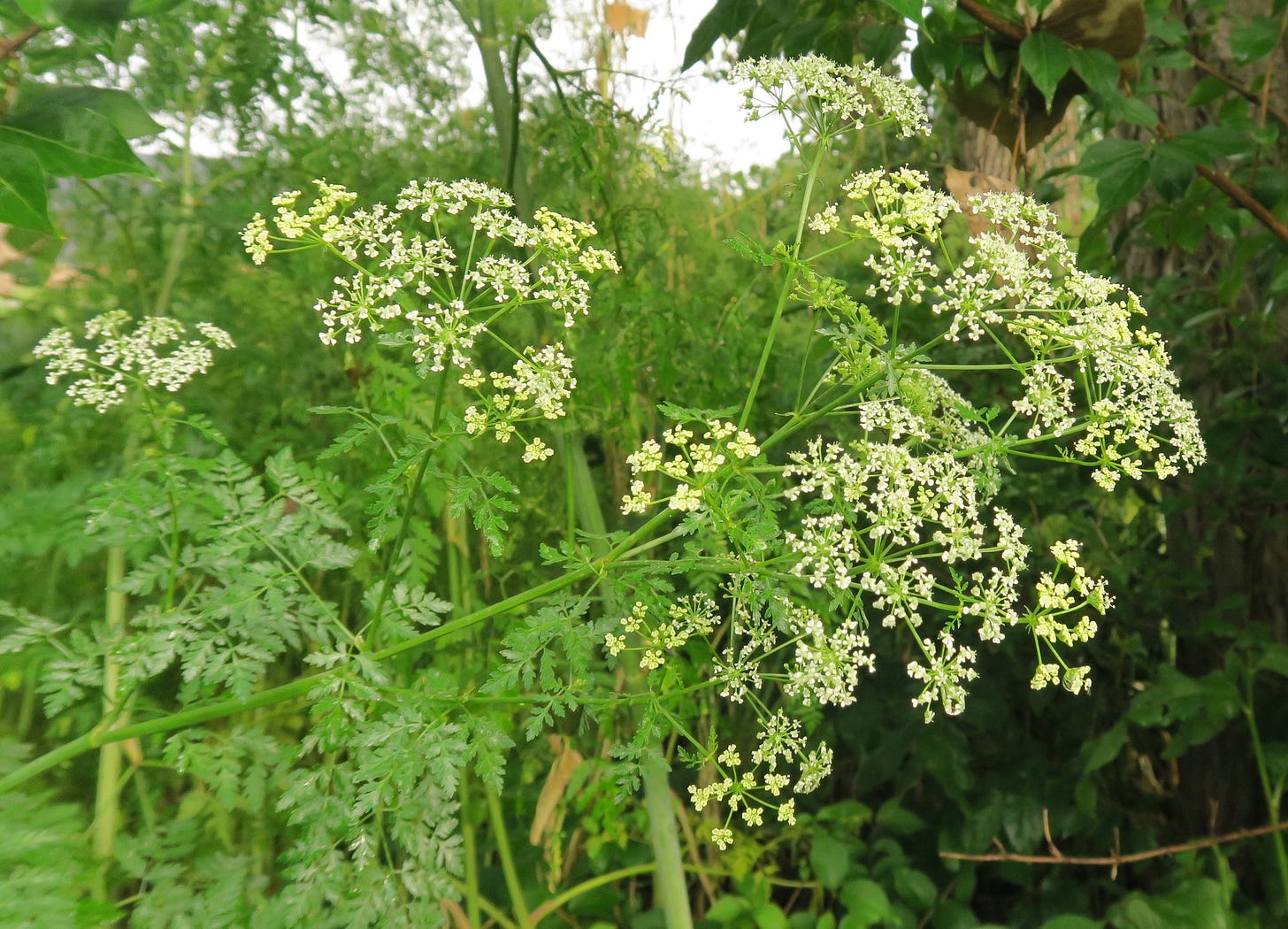
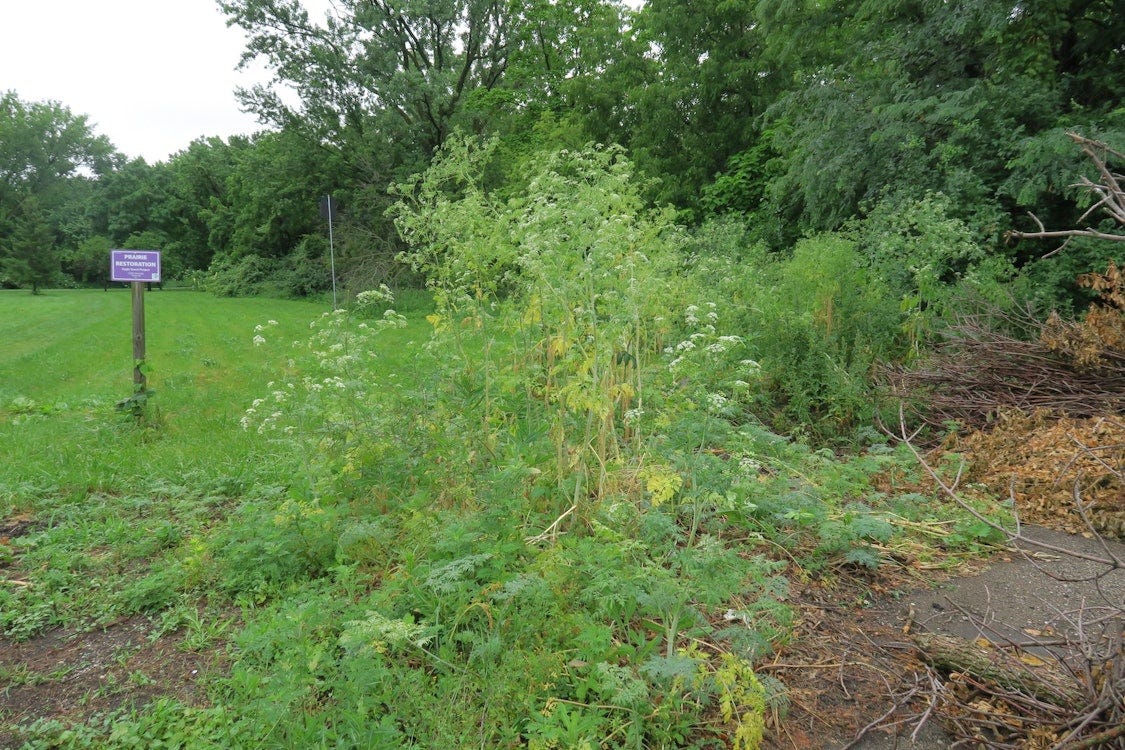
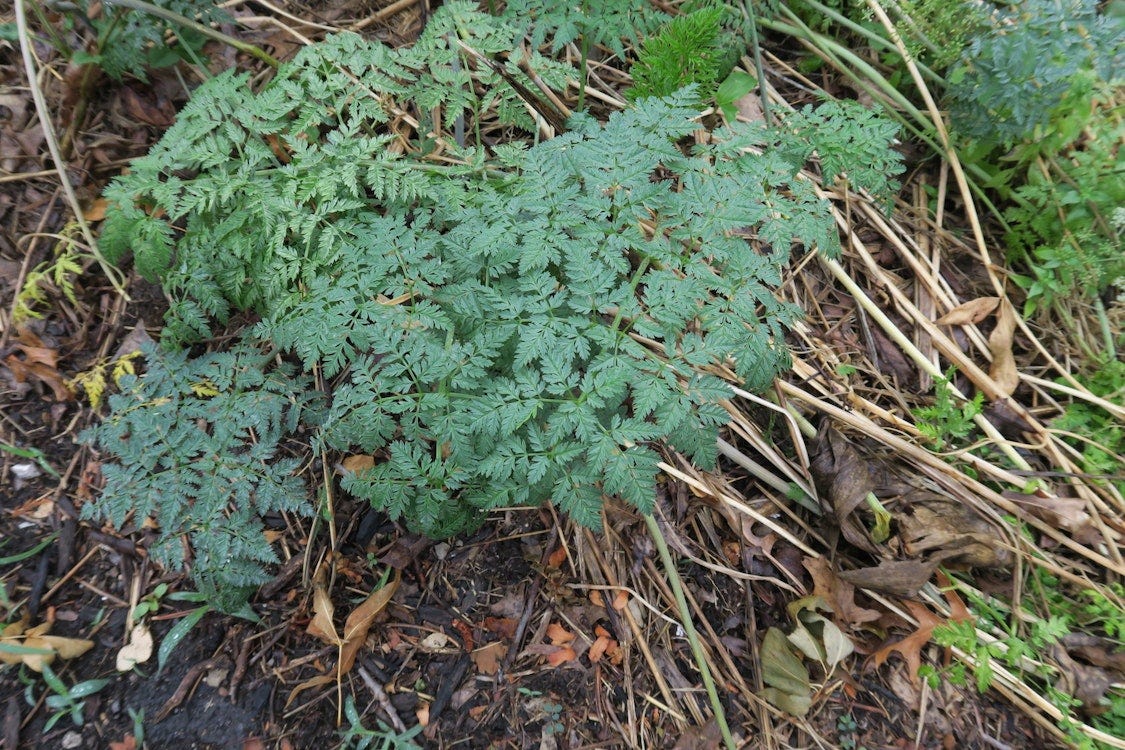
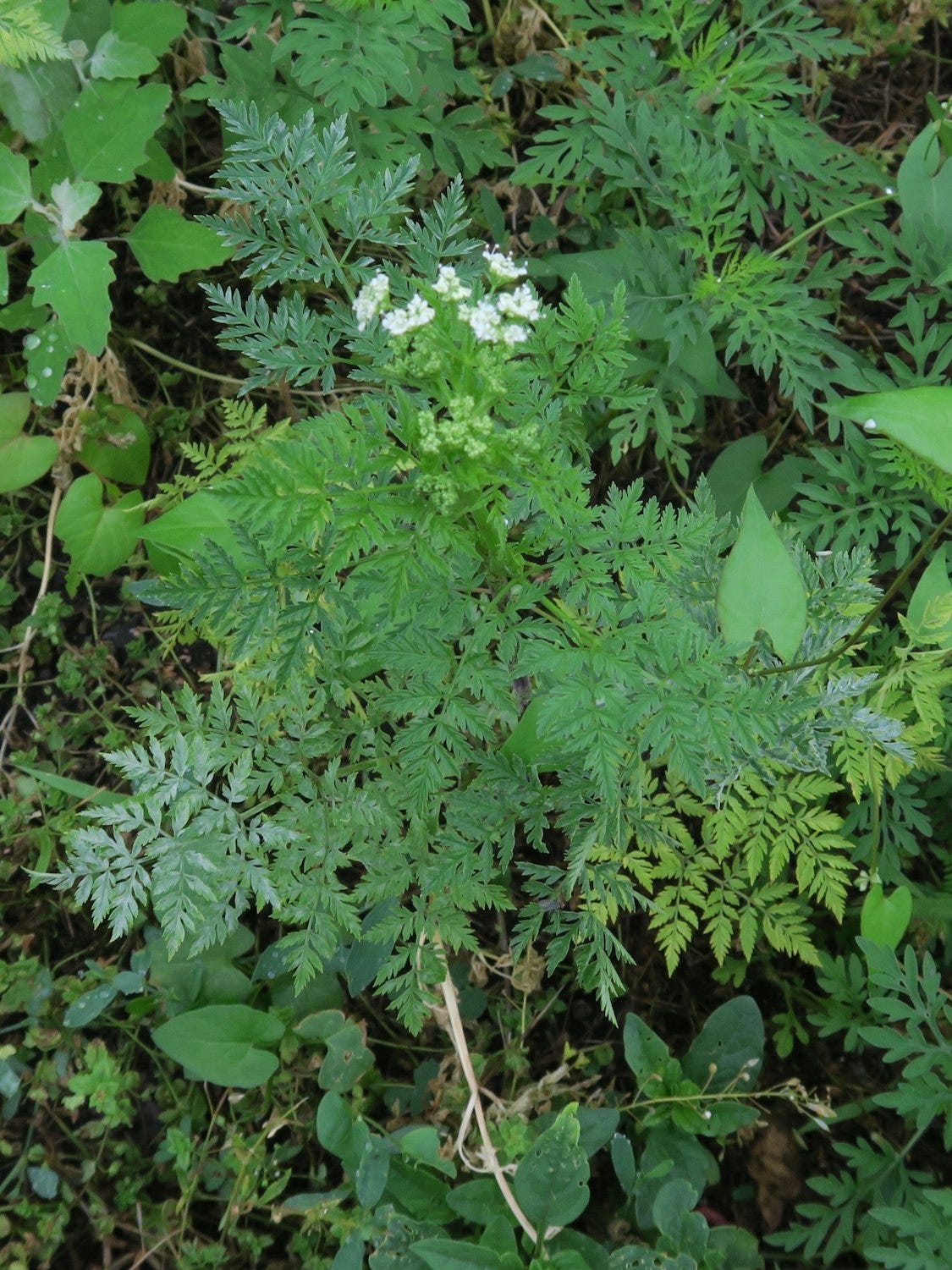
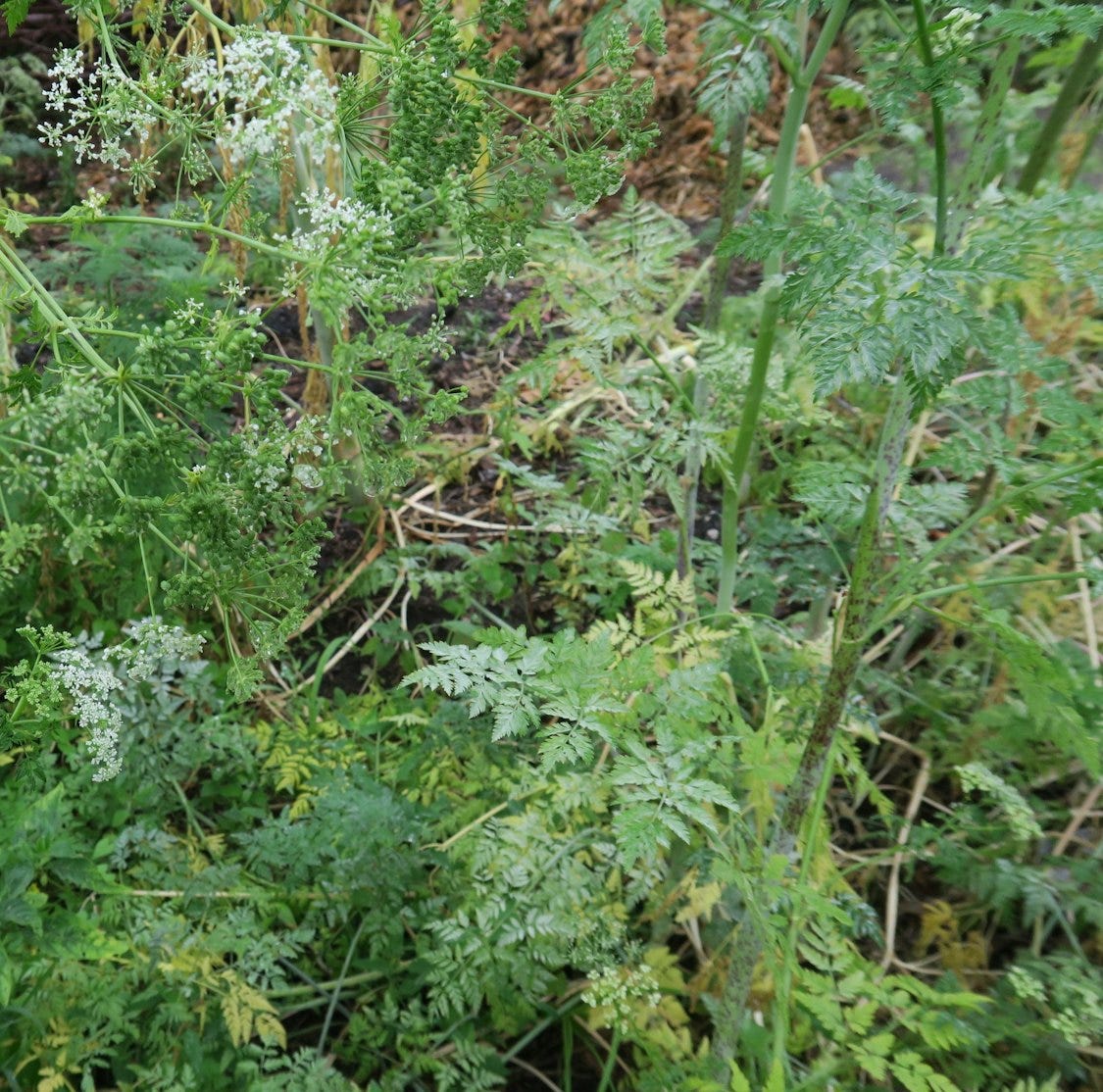
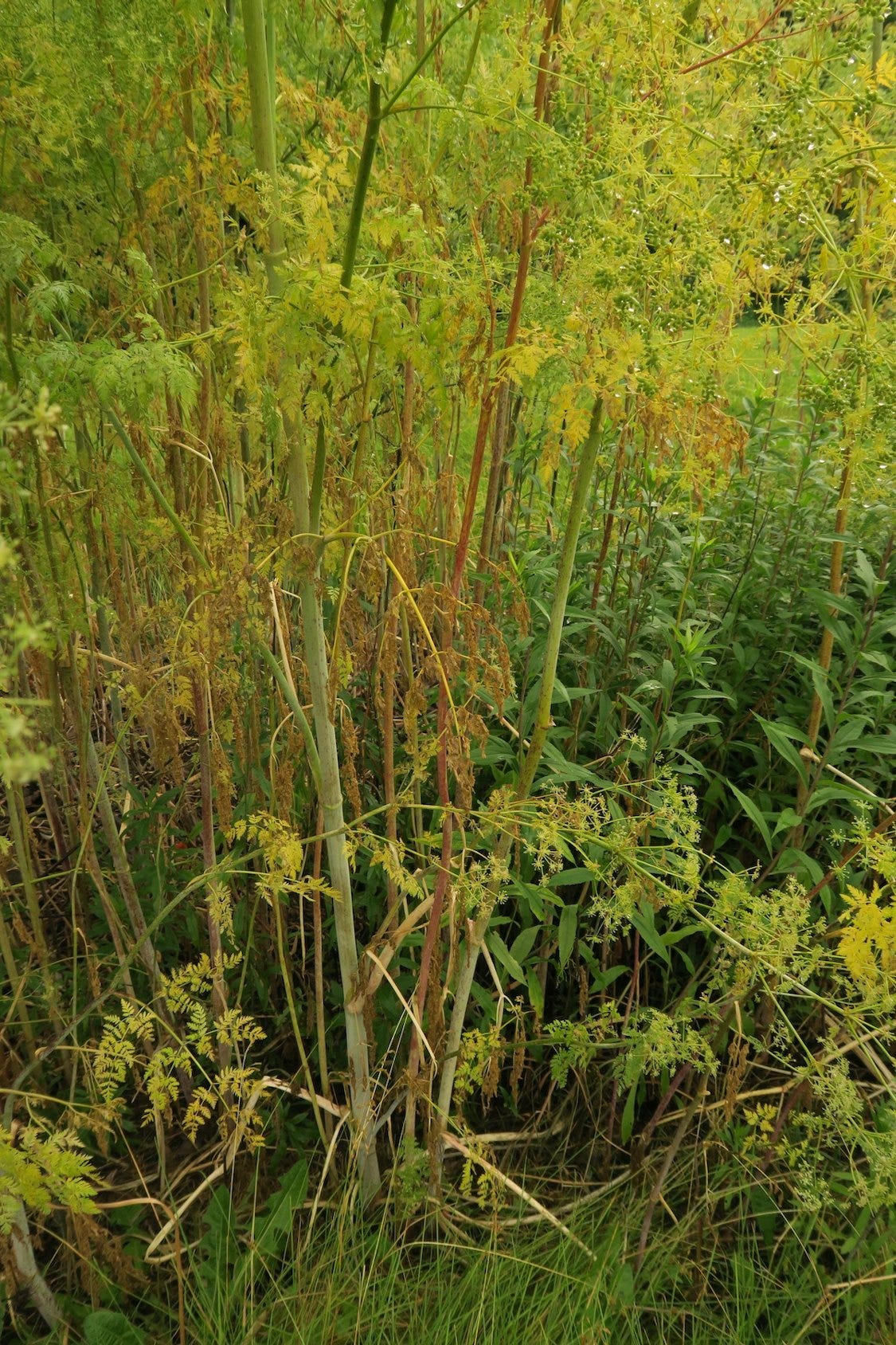
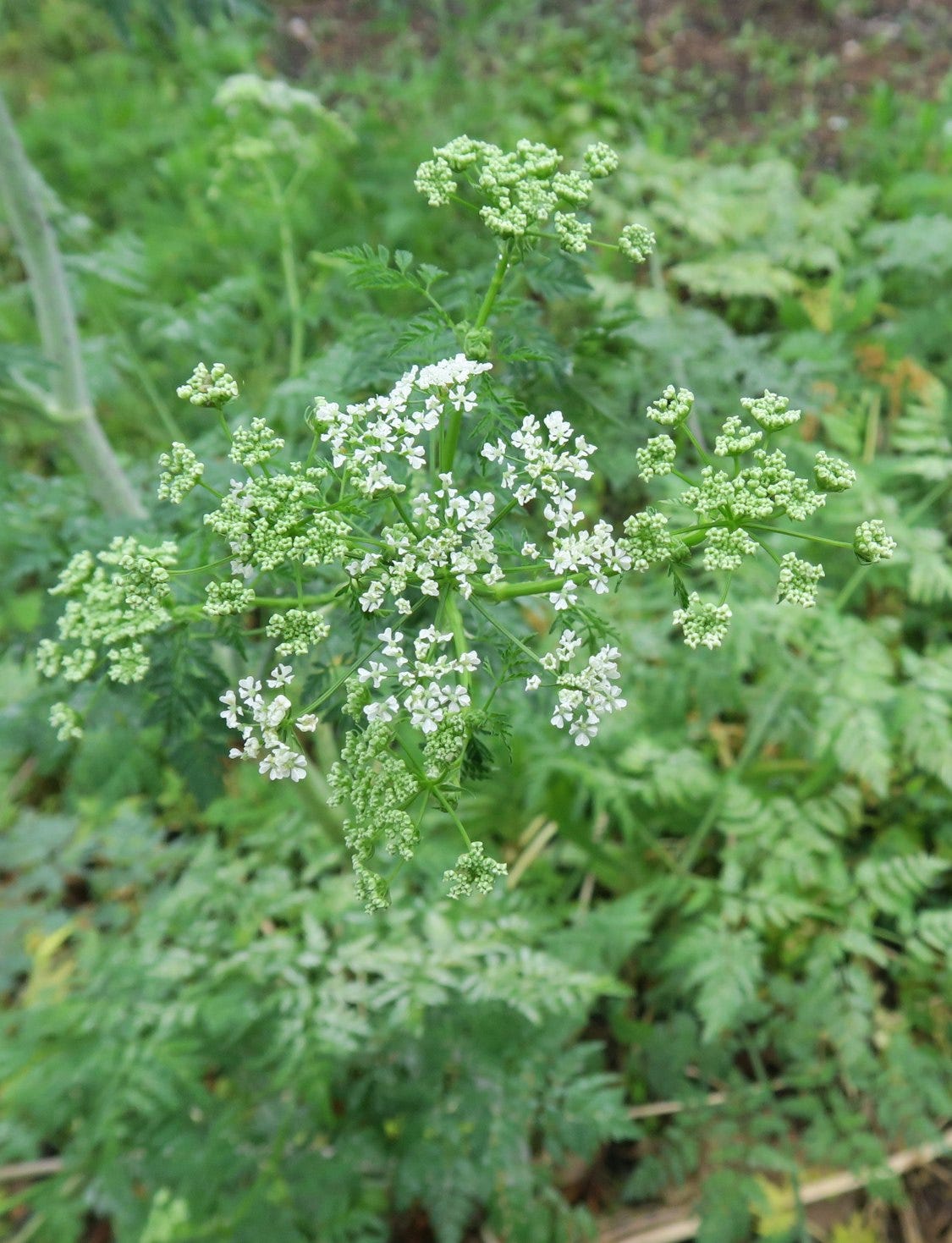
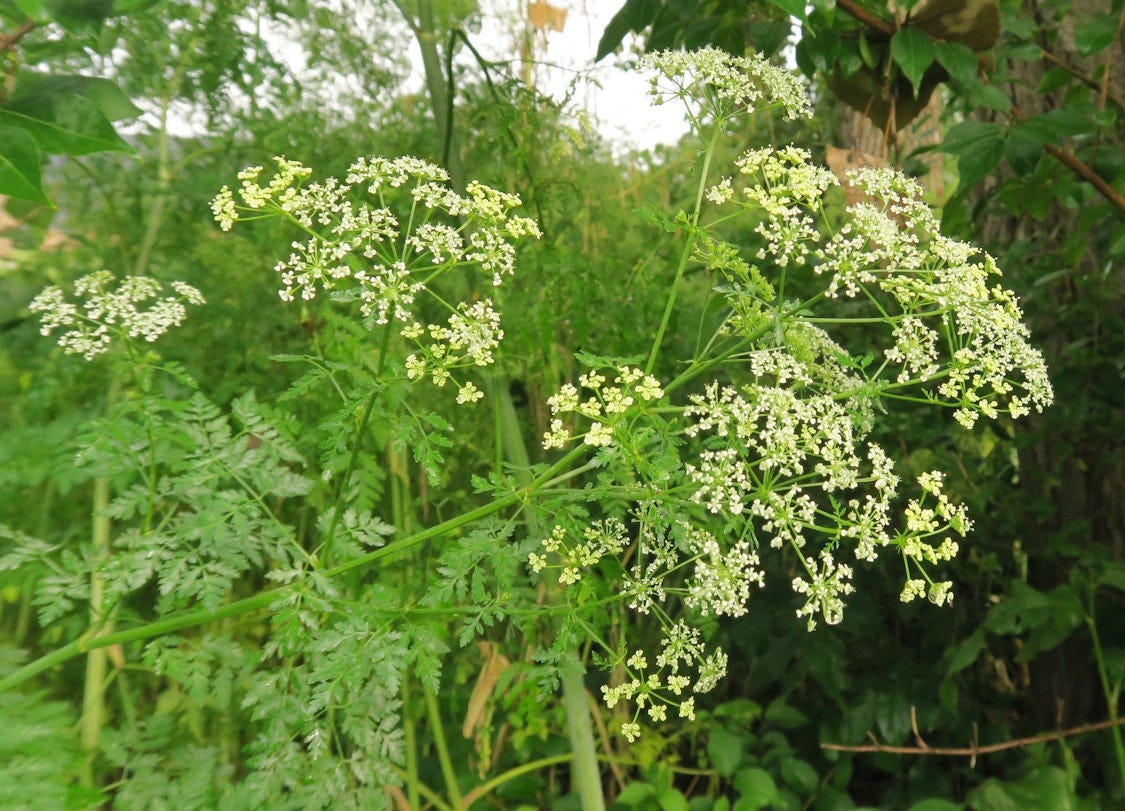
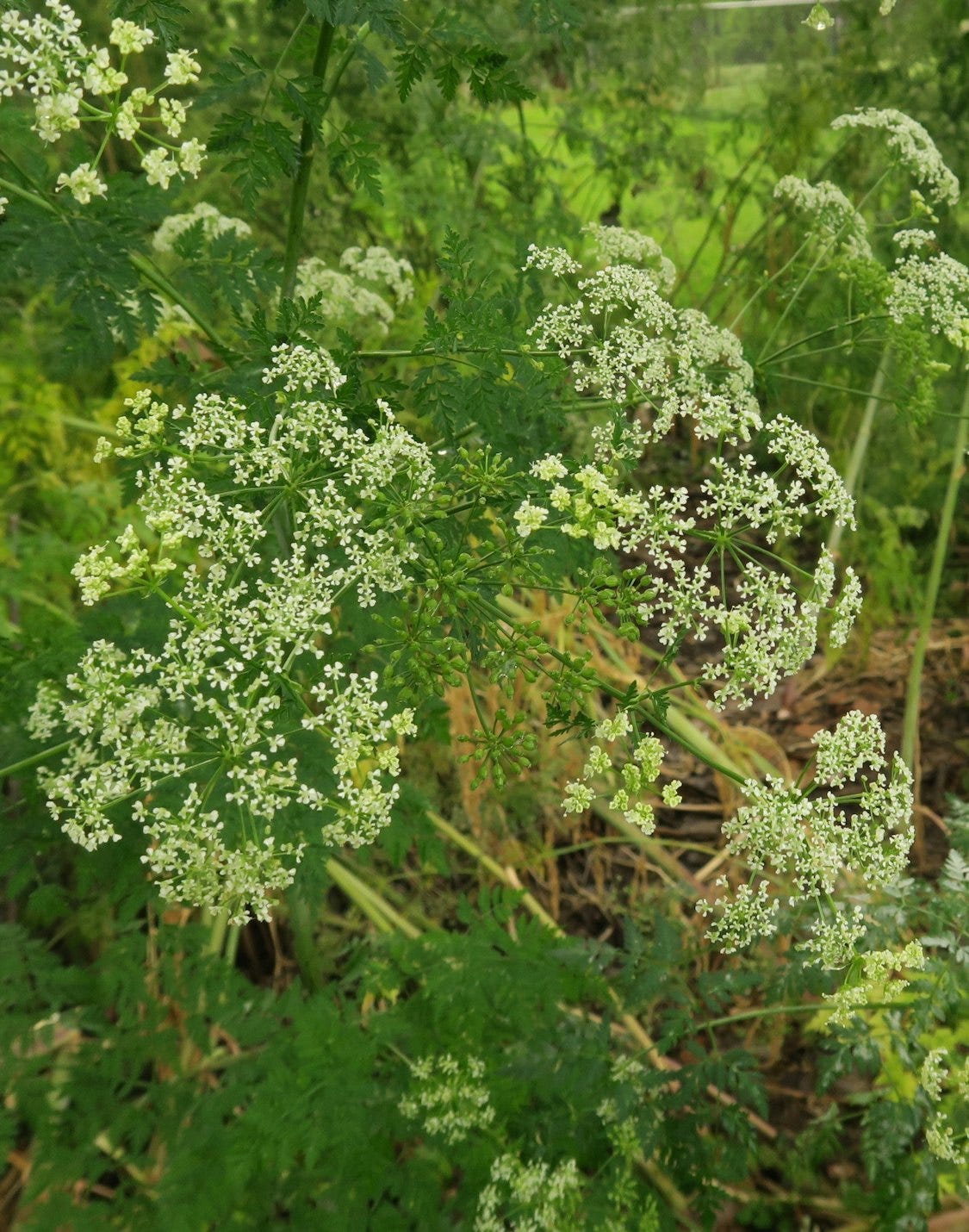
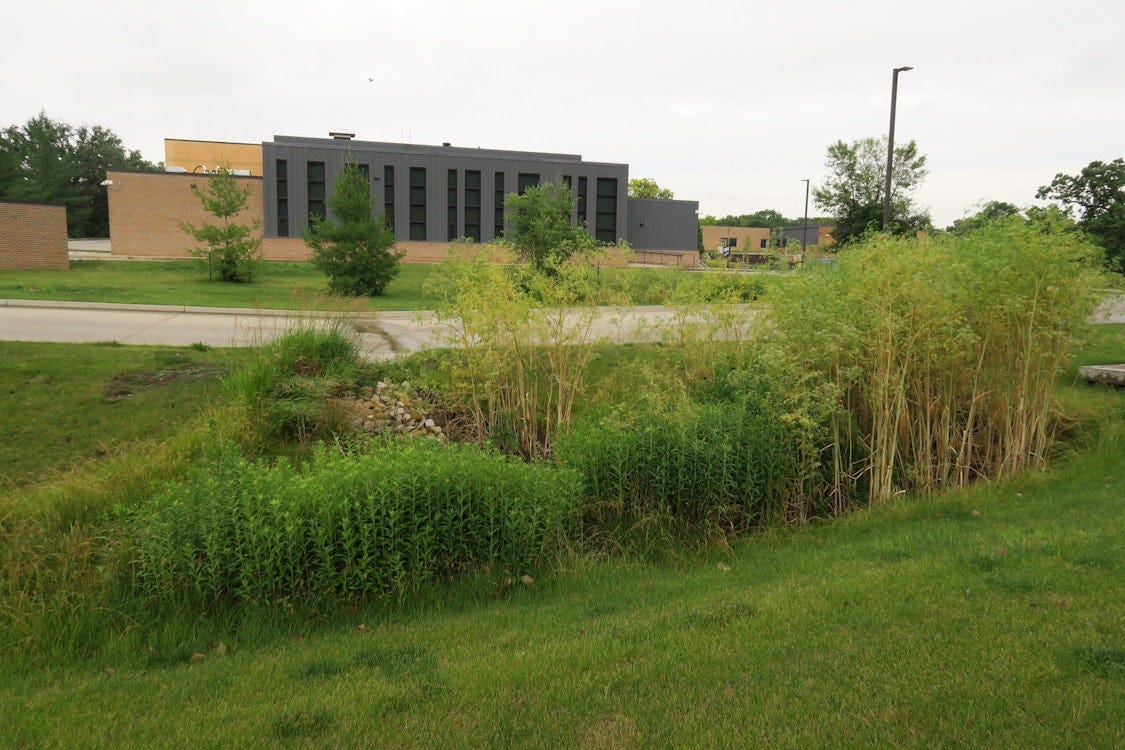
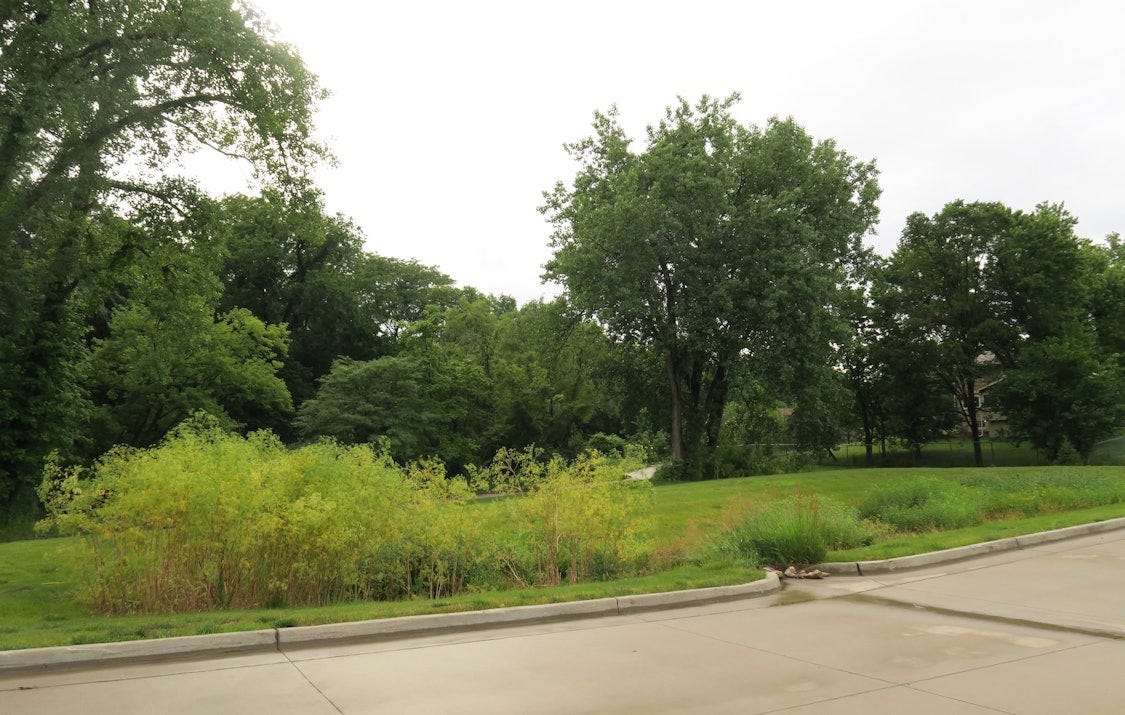
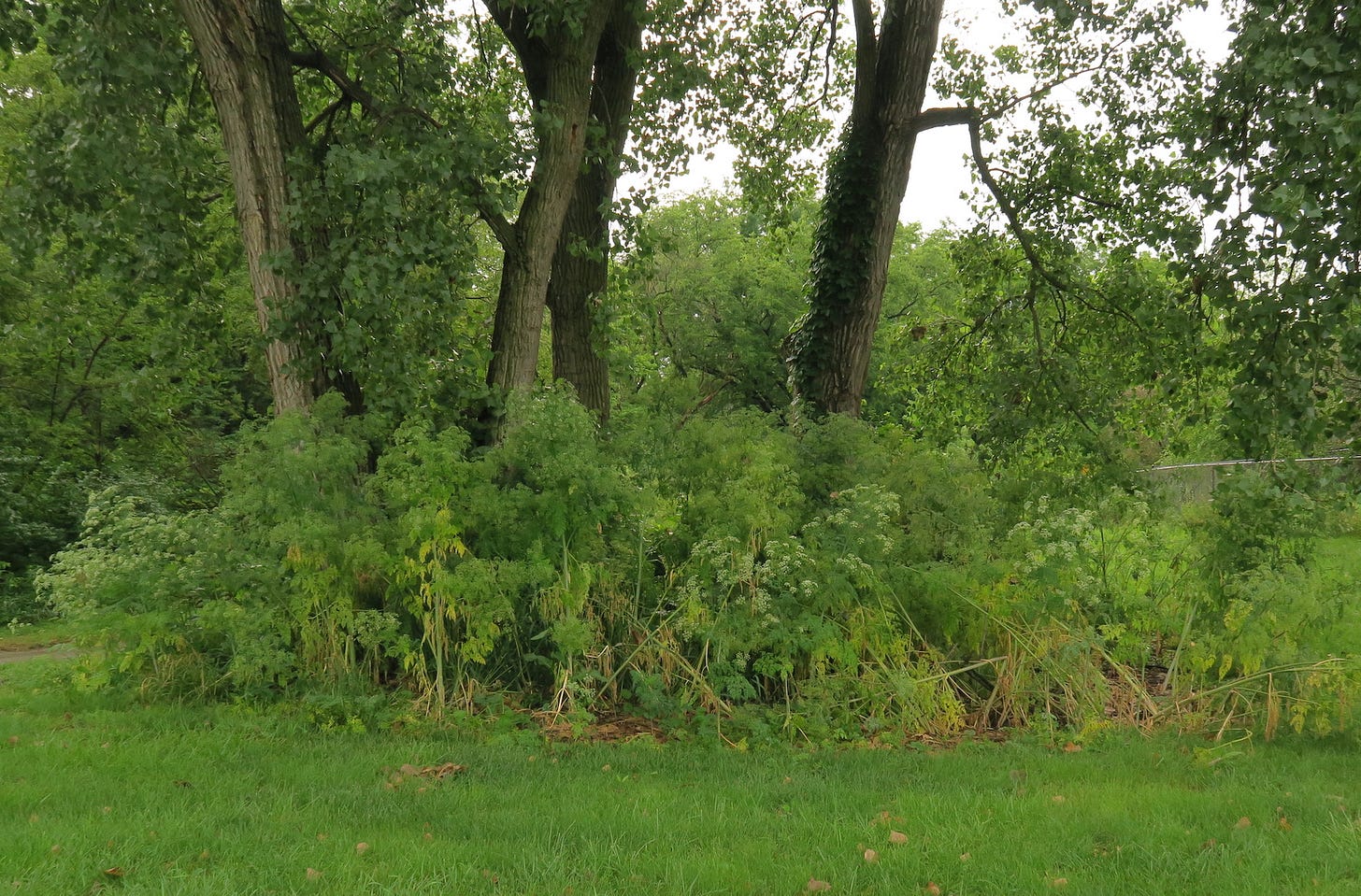
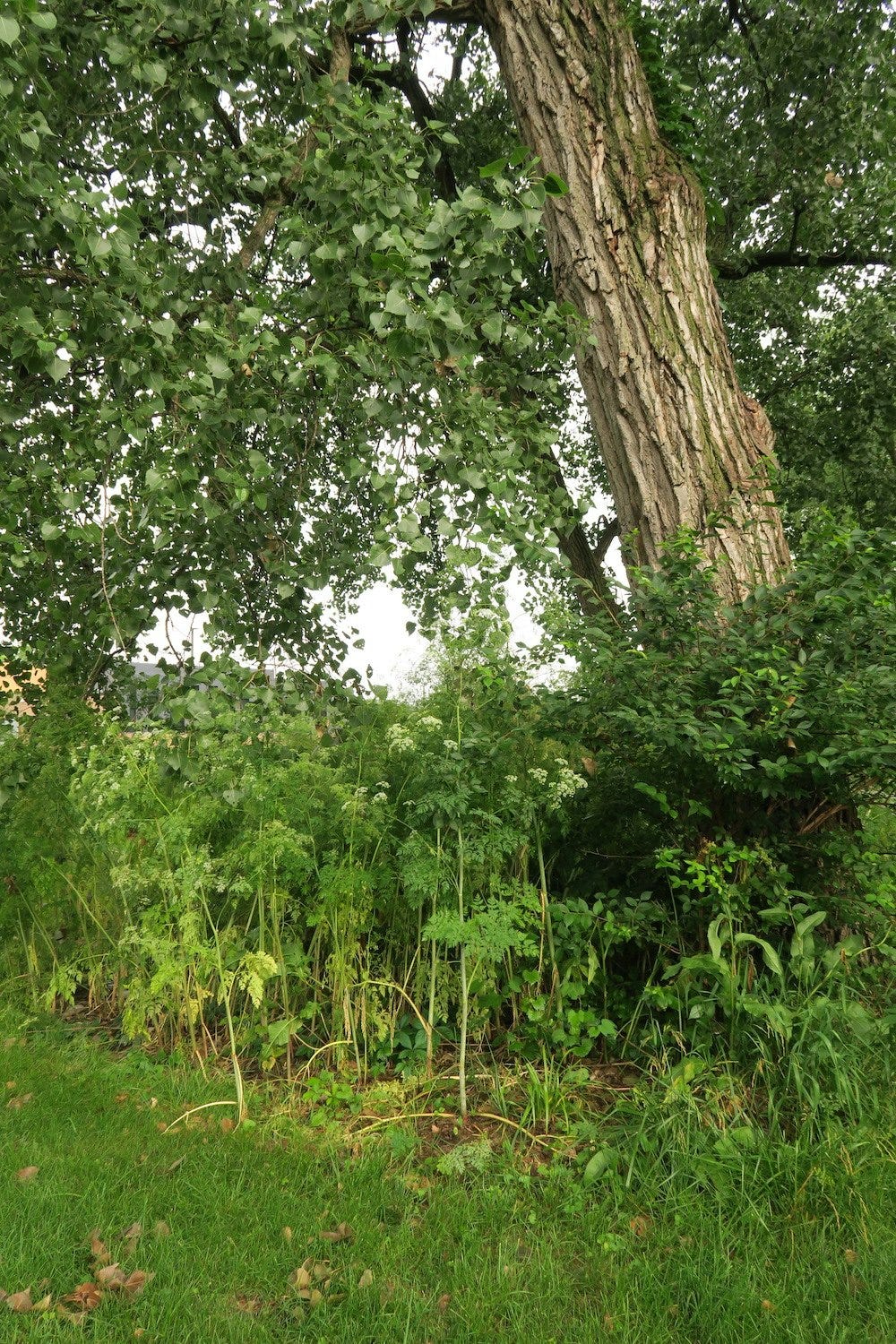
You are truly amazing. I hope you know how much light you spread in my life. A person of hope, giving others hope is a special joy.
Very helpful article. I had no idea poison hemlock was so prevalent in our area.